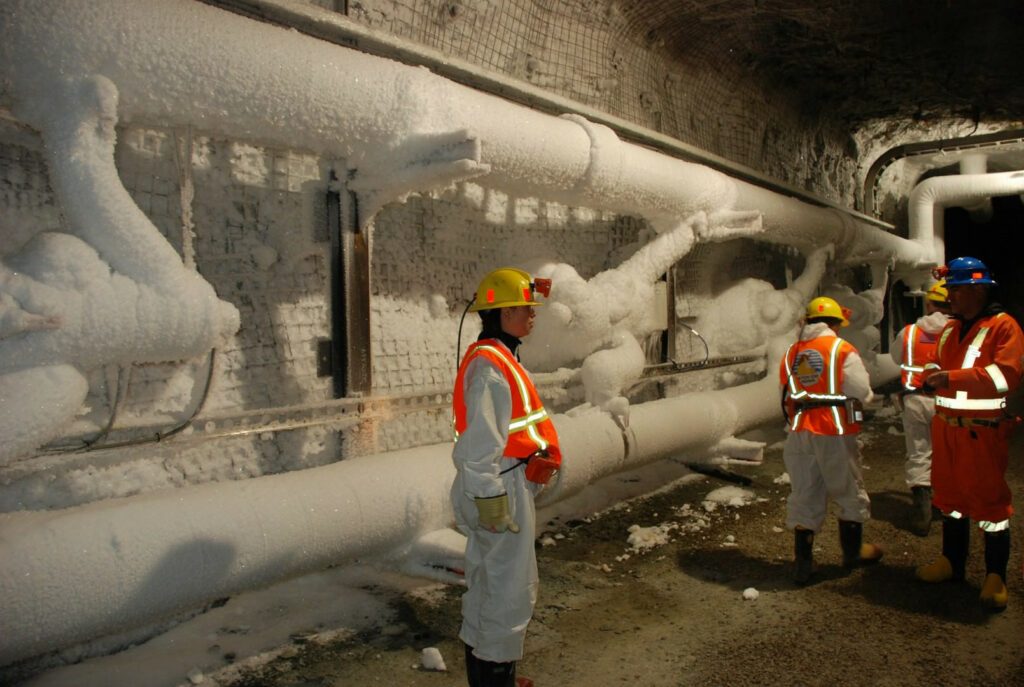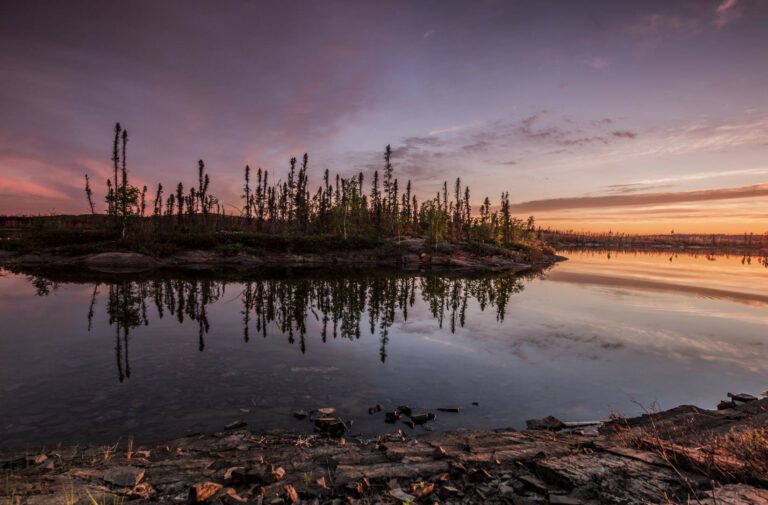One irony of the Giant Mine environmental disaster is that, despite its overwhelming cost to Canadian taxpayers, the mine’s tainted aftermath just keeps on giving to Yellowknife’s economy. This summer, the federal government is tendering a $600-million contract for a ‘construction manager’ to oversee the mine’s remediation, set to begin in full force around 2020.
It’s almost certain that contract will go a major national or international firm, but there are still plenty of opportunities at the subcontract level, says Henry Westermann, director of the Giant Mine Remediation Project with Public Works and Government Services Canada: “The subcontracts are really where the majority of the work is actually conducted.”
That means opportunities for NWT companies in areas like blasting, demolition, trucking, underground mining and mine stabilization and environmental monitoring.
“We’re going to do our best to maximize local, regional and Aboriginal involvement, by encouraging contractors to include that in their contracts,” says Rob Turek, PWGSC’s procurement team manager for the project. “It’s basically criteria that would incentivize bidders to commit to using Aboriginal labour, subcontracting portions of that work even further down to Aboriginal businesses, to provide training programs and apprenticeships to the people delivering the work.”
The number of employment hours/years the project — set to roll out over the next 10 to 13 years — will involve has yet to be calculated, says Westermann. But it’s fair to assume it will provide significant stimulus to the local economy. And at the Explorer Hotel on Thursday, various limbs of the remediation project team hosted around 100 individuals interested in the business opportunities presented by the $600 million contract. About half had flown in from outside the territory, while the other half were local attendees.
Remediation timeline
The construction manager contract will be awarded after a two-phase RFP process set to begin this summer, in which companies will be first vetted, then invited to compete. The plan is to award the contract in the spring of 2017.
At that point, the winning company will take over the care and maintenance of the site while their proposed plan moves through the Mackenzie Valley Land and Water Board’s water-licensing process. Full remediation work, including freezing the deadly legacy of arsenic trioxide underground, is not expected to begin until 2020 or 2021.
“Once the project gets final approval, we expect the actual implementation to take between six and nine years,” says Westermann, though the arsenic freeze will likely take several years longer to achieve final temperatures.
With remediation substantially complete, likely in the late 2020s, the site “will be transferred back to the GNWT and perhaps the City,” says Natalie Plato, deputy director of the remediation project with Indigenous and Northern Affairs Canada. “They will determine what happens at the site after we’re gone, with the exception of our core site… the freeze zone and the water treatment plant.”
Meanwhile, on the surface
“What the site looks like has yet to be determined,” says Plato. There are currently six different options for remediating the surface, and last week local and Indigenous groups got to offer their two cents on the pros and cons of each plan over the course of four days of meetings.
“From that [consultation] we will make the decisions of what the tailings will look like, what the pits will look like,” Plato says. “Of course we will remediate to industrial standards. That’s what we’ve agreed upon. But we’ve also heard from a number of groups, perhaps certain areas of the site should be remediated to residential standards, which would allow for residential occupancy in the future.”
That’s still up for debate, she says, although some things are mostly settled: “We were tasked with looking at rerouting Baker Creek off-site versus leaving it on-site, and all of the groups wanted to leave Baker Creek on-site. It has elevated levels of contaminants… [and] they didn’t want to introduce contamination into a non-contaminated areas.”
Once the surface is remediated and transferred back to either the City or the GNWT, the hope is that there will be relatively low ongoing maintenance costs.
“The freeze and the water treatment plant, those should be the only long-term requirements,” said Plato; these will remain federal responsibilities overseen by a team of five or six people. That said, “if we do leave, for instance, tailings, there will be requirements for inspections on any dams, for instance, so there could be other elements that require upkeep.”
Interim work
Although the main contract won’t be awarded until next spring and full-scale remediation work is several years away, there’s ongoing ‘risk mitigation’ work such as demolishing head frames and stabilizing pits and underground chambers. This coming year will see the demolition of the A-Shaft headframe and the old curling arena down by the yacht club.







